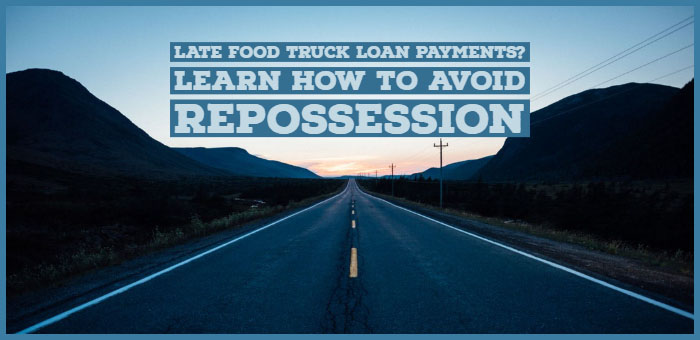Once an unknown financing option for culinary entrepreneurs, food truck crowdfunding has quickly evolved into a fast, effective way to raise cash for just about any mobile food industry project. Crowdfunding’s growing popularity is good news for creative culinary types who typically don’t have access to large bank loans or angel investments. Fortunately, there’s an entire category on Kickstarter that’s dedicated just to food truck fundraising.
From initial start up costs to fleet expansion to new equipment purchases, food truck crowdfunding can cover the whole gamut of various projects vendors need assistance in financing. The global crowdfunding market has seen significant growth over the years. By 2021, the market was estimated to be worth over $13 billion globally and was expected to continue growing, with projections suggesting it could reach between $20 billion and $30 billion by 2025.
Page Contents
Food Truck Crowdfunding 101
Before You Launch
If you want people to give, you’ve got to drum up excitement. Here are four strategies for building momentum even before launching your food truck campaign:
- Build your social network. Fundraising season is not the time to be a wallflower. Plan to let anyone who has ever supported your creative endeavors know you’re looking for backers. Don’t have much of a network in the first place? Then build one.
- Make a great video. Thanks to the built-in video recording features on smartphones, a good video doesn’t have to cost a dime.
- Plan perks people want. If you’re raising money for a food truck or other mobile food business, it makes sense to plan on sending coupons for free food or merchandise as thank yous.
- Create multiple entry points. Not everyone has $50 to spare, no matter how great your food truck project sounds. So make sure to have lower pledge levels (starting as low as a dollar) to encourage people to participate in and create momentum for your campaign. Likewise, come up with a few over-the-top perks to reward your biggest backers. A previous campaign for the food truck “The Cinnamon Snail” offered a $5,000 backer level. And guess what? A backer paid the $5,000 for the right to name the truck. Incredible!
Pick a Crowdfunding Site
The crowdfunding site Kickstarter has gotten so much publicity lately that you might think it’s your only option. But there are literally hundreds of other sites from which to choose. Here are some of the best, along with their key differences.
- Kickstarter: Kickstarter, one of the leading crowdfunding platforms, has facilitated the raising of over $6 billion from backers for various projects across its platform since its inception in 2009. Kickstarter has become a popular choice for creators in categories ranging from technology and design to music, art, and food-related projects, including food trucks. With more than $350 million raised for projects since 2009, Kickstarter is the best-known crowdfunding platform, but it also takes the largest cut: a 5% flat fee, plus 3% to 5% for payment processing via Amazon. That means you typically pocket just 90% of pledges. And Kickstarter’s rules dictate that if you don’t reach your goal—even if you raise $9,500 out of the $10,000 you’re seeking—you get nothing. Despite these issues, Kickstarter has a reputation for helping people raise more money than any other site.
- Indiegogo: The main reason people choose Indiegogo is that, unlike Kickstarter, it lets you keep all the cash you raise even if you don’t meet your goal. Such largesse doesn’t come free: Indiegogo keeps 9% of funds raised under this “flexible” funding plan, plus a 2% to 3% payment-processing fee. Otherwise you pay a 4% flat fee for Kickstarter-style “fixed funding,” plus the 2% to 3% fee. Indiegogo isn’t just some lame also ran, either. And unlike Kickstarter, Indiegogo allows charity and cause-oriented projects.

Follow these crowdfunding tips.
Know the Rules
Not all crowdfunding websites have the same rules. Different platforms charge different percentage fees. Kickstarter hosts all or nothing fundraisers, meaning you need to raise 100% of your funding request amount or you won’t get anything. For examples, you could reach $99,000 for a fundraiser seeking $100,000 and end up with zero dollars for your venture because you didn’t hit the goal.
- All-or-Nothing Funding: Kickstarter uses an all-or-nothing funding model, meaning that if the project does not reach its funding goal by the deadline, no money is collected from backers, and no fees are charged.
- Project Guidelines: Kickstarter requires projects to fit within one of their 15 creative categories, and they must be projects with a clear goal, such as making an album, a book, or a work of art. Projects cannot be for charity, offer financial incentives, or involve prohibited items (e.g., weapons, drugs).
- Rewards: Creators must offer rewards to backers who pledge to their projects. These rewards should be related to the project itself and cannot include items from prohibited categories.
- Transparency and Communication: Creators are expected to be transparent about their project and its progress. They must fulfill all rewards promised to backers or refund any backer whose reward they do not or cannot fulfill.
- Eligibility: To start a Kickstarter campaign, you must be 18 years or older, reside in a country where Kickstarter operates, have a bank account in the country you’re creating a project in, have a government-issued ID, and have a credit or debit card.
Get Real About Your Overall Costs
The biggest mistake novice food truck crowdfunding campaigns make isn’t asking for too much money; it’s not making a realistic estimate of how much money they will need to cover their expenses.
Let’s say that you know it will cost $15,000 to purchase your truck. Subtract fees (of about 10%, including payment processing), the cost of shipping out gifts to your backers, and taxes, and you might net only half of your total funds raised. In other words, you should ask for at least a third more than the total amount you think your food truck project will cost. Many founders don’t realize until after their campaign is over that they underestimated their costs on the fees and also fulfilling bonuses for supporters.
If you feel uncomfortable asking for the full amount up front, once you reach a lower goal, you can announce a stretch goal and send updates to your backers explaining how you’d use any extra funding. Another tactic I’ve seen successfully used is to email everyone who already funded you in a campaign and ask them to give a little bit more. This simple step put some campaigns over the top.
How to Drive Thru the Mid-Campaign Lull
It happens to even the most successful food truck crowdfunding campaigns: After a quick start and a huge number of pledges from your inner circle of friends and family, donations start tapering off in the second or third week. Here’s how to turn things around in your food truck crowdfunding campaign.
- Don’t let your food truck campaign drag on too long. A month is the typical sweet spot for most crowdfunding campaigns. Any longer and people will put it on the back burner, then forget to donate. Any shorter and your project can seem rushed and disorganized. It’s also best to end your campaign on a weekday evening so you can give the final push when people are probably bored at home and surfing the web anyway.
- Stagger your updates. Assume that donations will taper off in the second week of your campaign—and be ready to re-energize it by sending out an update on funds raised or newly added prizes.
- Maintain separate email lists. You may want your first email at the start of the campaign to go only to close friends and family, the second to professional colleagues, and the third to everyone else. Casual acquaintances are more likely to be motivated by seeing that the campaign already looks like a winner. And be careful not to annoy people who already funded you with numerous follow-on solicitations.
- Don’t freak out. The mid-campaign slump is normal, not an early indicator that your project is doomed. Avoid the urge to add perks you can’t really afford or to start emailing people on a daily basis.
How to Make Backers Happy
Nobody likes dealing with a flake, especially when that flake has your money. So if you ever hope to get your funders behind another project, you need to assure them that you’re on the ball, making progress, and will have something to show for their faith.
- Finish early. Looking for a great way to make your backers really happy? Beat expectations and send out the bonuses or gifts as soon as you can. It’s easy to put off this step when you’re also starting a new business, but you really shouldn’t.
- Communicate. It’s not always possible to finish early, of course. If you’re running late, like three-quarters of all crowdfunding campaigns, let your backers know.
7 Characteristics Of Successful Crowdfunding Campaigns
Creating a compelling and successful crowdfunding campaign for a food truck involves leveraging unique concepts, understanding your market, and executing a well-planned strategy. Here are some additional insights and examples to enrich your approach:
Unique Concept Example
Consider the story of “The Galactic Grill,” a food truck campaign that capitalized on the rising popularity of sci-fi and space-themed entertainment. Their concept was simple yet innovative: offering a menu inspired by cuisine from different planets and galaxies, as imagined in various sci-fi series. They showcased how their market lacked this niche, engaging fans of the genre who were eager for a taste of the cosmos. The Galactic Grill used vivid visuals and themed menu items in their campaign to attract backers, effectively showing the unique value they were bringing to the local food scene.
Defining Your Customer and Market
“Vegan Vendetta,” a vegan restaurant and food truck, knew their target market wasn’t just anyone interested in fast food; it was environmentally conscious millennials seeking plant-based options. By focusing their campaign messaging around sustainability, health benefits, and the environmental impact of meat consumption, they connected with their ideal backers — those who prioritized these values in their dietary choices.
Work Before Campaign Launch
an email list of over 5,000 potential backers by offering a free gourmet taco e-book in exchange for email subscriptions. They engaged this list with updates on their journey, sneak peeks of their menu, and exclusive offers. When they finally launched their Kickstarter campaign, a significant portion of their funding goal was met within the first 24 hours, thanks to this pre-launch effort.
Solid Marketing Plan
“Curry On Wheels” identified their target demographic and crafted a marketing plan that included partnerships with local businesses, social media influencers in the food industry, and guest appearances at popular local events. By creating buzz around their unique offering of authentic, street-style Indian curry, they were able to reach their funding goal before the campaign’s midpoint.
Video That Tells Your Story
The Barmobile truck raised more than $41,000 from 243 backers by sharing their personalities in video. Utilizing a 1950’s Flxible bus transformed into a rolling craft cocktail bar, the Barmobile aims to bring high-quality, innovative drink services to private events, corporate parties, and more, under the new 12C Catering license. The team comprises industry veterans Domingo-Martin Barreres, Kevin Mabry, and Suzie Dagenais, each bringing a wealth of experience and a shared vision for exceptional hospitality and service.
Offering Great Rewards
“BBQ Bonanza” offered tiered rewards that appealed to a wide range of backers. Lower-tier rewards included a personalized thank you note and a branded BBQ spice blend, while higher tiers offered a private BBQ party for 20 people, and the top tier included a BBQ masterclass with the chef/owner. They ensured that each reward provided value and appreciation for the backer’s support.
Early and Frequent Communication
Throughout their campaign, “The Dessert Cart” a gourmet dessert food truck, maintained open lines of communication with their backers. They provided weekly updates on their progress, shared challenges and how they were addressing them, and celebrated milestones. This transparency built trust and kept backers engaged and supportive throughout the campaign.
By examining these examples, you can see how blending a unique concept with strategic marketing, engaging storytelling, and thoughtful rewards can lead to a successful crowdfunding campaign. Remember, the key to crowdfunding success lies in connecting with your audience, offering them something they can’t find elsewhere, and maintaining their trust and interest throughout your journey.




